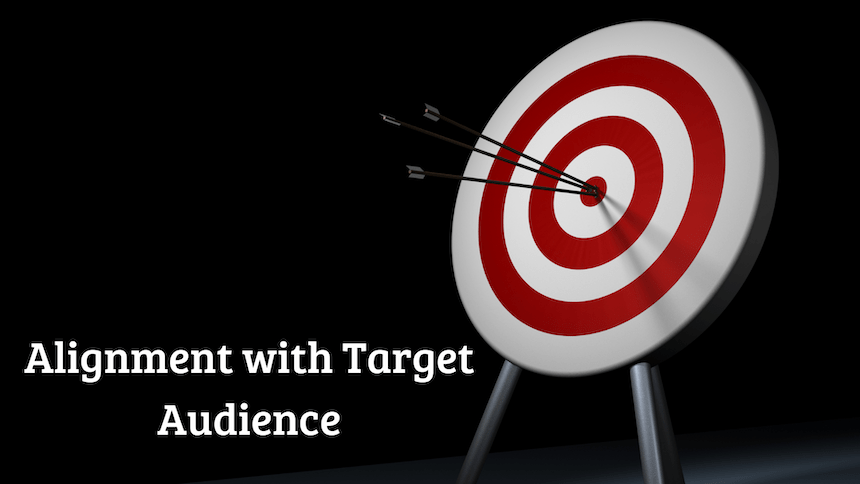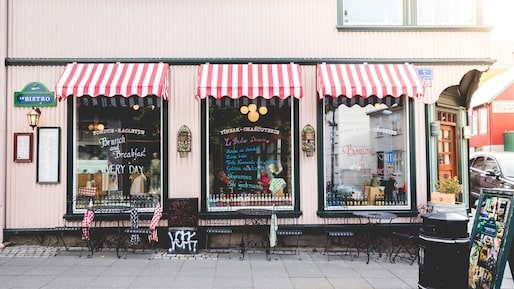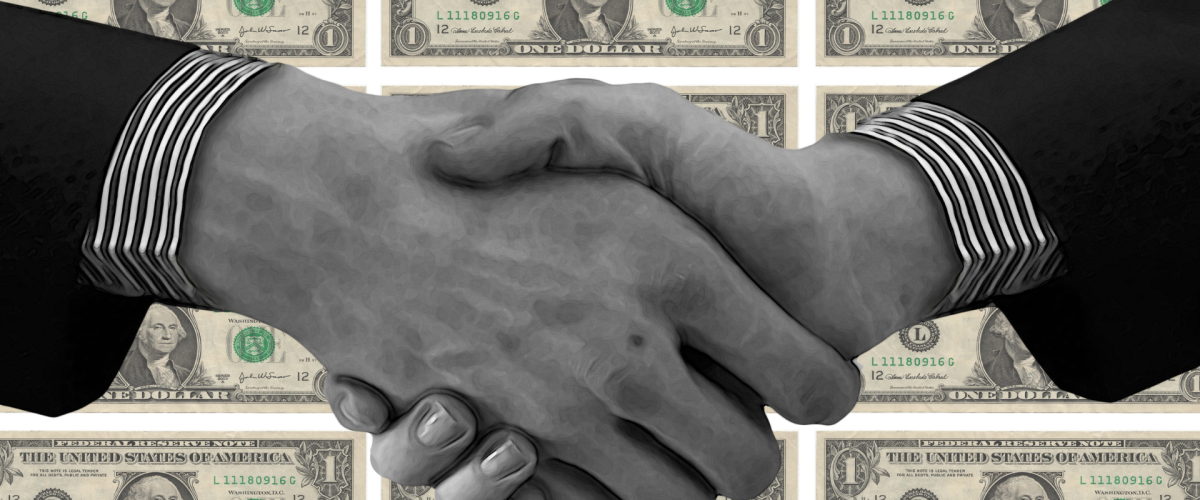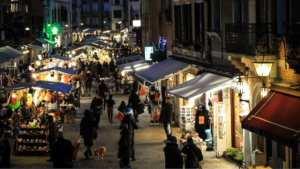TSE Entertainment gets a lot of requests and calls about fair, venue or festival event sponsorship. That’s great since event sponsorship development is what we do. There are a few things a sponsorship seller will want to know about your event before you ever get close to the point of cashing that first big check.
Audience Size Doesn’t Always Matter When It Comes to Event Sponsorship
It’s true that regional and national brands are looking for larger events that have audiences that align with their brands. Smaller fairs, festivals or venues will have a more difficult time attracting sponsors to their events. However, there are many instances where the overall number of attendees is not the deciding factor.
It is not the size of the audience that matters regarding sponsorship in these cases. It is the quality of the audience. A venue or event with 75 people with high disposable incomes can be more powerful and beneficial to certain brands than 10,000 people at a concert. It depends on the audience’s buying habits and how well that audience matches up with the product or services of prospective event sponsors, i.e., their target audience.

How representative is the audience of the consumer market in general? An easy way to check this is to survey the audience. I know. Surveys aren’t that easy. In the case of prospective audiences for your sponsor, a survey is as close as you can get to identifying a product buyer. A product buyer is to whom the sponsor wants a connection.
TSE has a number of proprietary ways to glean the interest and characteristics of potential sponsors’ target audiences and see how it might match your audience. One event I sold had a motorcycle client who we thought matched up well with us. When we applied our process, we found we had more of the clients’ audience attending our event than shopping at his store.
That was a no-brainer decision for the client.
Another was a farming co-op that spent large amounts of money marketing at farm show-type events. Our process showed we had more of the target audience than he could get at the farm shows in a better environment for less money.
Knowing your audience is the first step in making an event sponsorable.
The more information you have about your audience, the better you can describe it to your prospective sponsor. There is never too much audience information for event sponsorship. From basic demographic information like age and gender, to what kind of car or truck they drive, what part of town they live in, how old are the children (if any), do they own or rent, how much do they pay for rent or mortgage—this is just a start as to what you should know about your audience to raise your events sponsorship profile.
Then add where they get groceries, what they are thinking about buying in the next few months (a home? A car?). Where do they bank? How many pets do they have and what kind are they? How much do they spend at restaurants? What restaurants do they frequent? Where do they go before they visit your event? Where do they go when they leave? How much money do they spend at your event?
The list is mind boggling.
Event Sponsorship: What do you have to sell—the assets and inventory.
As a fair, venue or festival, you sell tickets to the attendees, but to your sponsor, you sell your audience and the methods they can use to reach the audience.
Take a moment and think about your event and everything you could use to highlight an activation or sponsor within the texture of your event. Event sponsorship is about creating a memorable experience between the brand and those engaging with it at your event.
Examples of ways to do that include speaking engagements, video Posts, audio posts, photos, signs, banners, front of tickets, back of tickets, video boards, public address announcements, social media posts of any kind, named buildings, named areas, named streets, named rides, day sponsorship, event naming rights, marketing space (tabling); marketing space (equipment); named beverages, web pages, event apps, Facebook event page, inclusion in email messaging, inside display space, outside display space, event guide, event poster, audio ads, video ads, hospitality, exclusive items.
Even more examples of sponsorship assets include things like a sign on playing field, signage at center of playing field, sign near center of playing field, dasher boards behind net, dasher boards on one end, dasher boards at center, Facebook text post, Facebook video post, Facebook live post. The same thing for the other social media channels (except Instagram—no text only on Instagram) Tik Tok, Snapchat filters, X. Map designation, sign in camera view, etc.
Valuing Fair, Venue, and Festival Sponsorship Assets
Now that you have identified all the possible assets you could sell to a sponsor (Asset Inventory), what would you charge for them? The area of valuation is one of the most challenging parts of sponsorship. It relates closely to the way both online and offline advertising works.
Brands pay for impressions, actions, and conversions. They are expressed in a number of ways.
Impressions: CPI or CPM stands for cost per impression or cost per 1,000 impressions. How many people saw my stuff? What did it cost me for that? A sign, banner, billboard, or poster has a CPM rate associated with it.
Actions: CPC (Cost per click) This is an action on the part of a user. In the online world, it is clicking on an ad, link, or photo. In the event sponsorship world, it also includes going to a booth, picking up sales material, or looking for more information.
Conversions: This is attaining a pre-established goal for the sponsor. It could simply mean brand awareness, or buying a product, signing up to an email list, trying the sponsor’s product, becoming a lead, or other actions the sponsor wants to achieve at your event.
As a rule, sponsorship assets with their associated activations become more valuable as they provide the capability to move from impressions to actions, to conversions. Of course, volume also comes into play with valuation. For instance, if a sponsor’s goal is brand awareness, they may see that a huge number of impressions overshadows giving out a limited number of product samples.
If you’ve ever looked at sales funnels, then you know the closer to the sale the action occurs the more valuable that action becomes. Conversion/Action/Engagement Assets are more valuable than brand awareness (impression) assets and should be priced accordingly.
Another factor that impacts event sponsorship valuation is the venue or event itself. Brands want to be associated with great events that draw the kind of audience that aligns with their target market. That means the reputation of the event or venue will factor into their decision to sponsor an event or venue along with the audience.
Would you want your brand associated with the Fyre Festival which was marketed as a luxury music festival where about 5,000 people paid up to $100,000 for tickets. Instead of being provided the luxury accommodations and gourmet food, they found themselves on an unfinished beachside venue with tents for accommodations and most of the announced acts didn’t show up. I don’t think so.
Put another way, the event itself where the sponsorship asset is placed is a big factor in the decision process. For example, which would you rather place your sponsorship dollars; at some one-of-a-kind local event with 80,000 people or 80,000 people at the Jazz and Heritage Festival in New Orleans? Both events get you in front of the same number of people, but the choice is obvious from a credibility point of view. Companies don’t want their brand value diminished by associating it with poor events.
It should be noted that “credibility” is a two-way street. Having major trustworthy brands sponsoring a festival, fair, or event brings instant credibility to the event as well. When it comes down to it, the sponsorship development process is a process where both parties are looking for alignment of values and target audiences. It’s a process that is best left to experienced professionals who interface between the regional and national brands and sponsorable fairs, festivals, and venues which are looking for credible brands to be part of their events.
As you can see the valuation of a sponsorship assets is based on:
- The Quality of the Asset
- The Nature of the Asset in the sales funnel
- The quality of the event where it takes place.
What If Your Event is Not Sponsorable by National Brands?
TSE is often approached by smaller community festivals to do sponsorship development for them. For festivals in which TSE is doing the entire event management, TSE may take on the role of developing income from local businesses and organizations.
However, these smaller festivals typically don’t provide the vehicle that larger brands are looking for when allocating their sponsorship dollars. It would take a highly aligned audience as discussed earlier for a national or regional company to step up to the plate regarding sponsorship. In these highly targeted audience cases, the number of potential sponsors would be severely limited because of the specific audience.
A first-time festival expected to draw an audience of several thousand with no data is not in a position to attract regional/national brands as sponsors. While such festivals or events can use data from similar events in their area to address to help with the data required by sponsors, such first-time events are handicapped by:
- The lack of their ability to provide anticipated attendance numbers with any confidence.
- The inability to provide audience characteristics of those attending the event.
- The fact that they have no reputation or brand identity.
The first two issues can be addressed to some extent by looking at similar events in the same geographic area. The entertainment lineup can also be used to provide some credibility and audience information. Entertainers have a following and their fans have characteristics that can be used in certain cases. That following would need to be local to the area of the event if such information were used as part of a sponsorship pitch.
When approached by community festivals or events for sponsorship, TSE will make an assessment as to whether or not such an event would be of interest to regional or national brands. Most are not the type of events that attract a sponsor which is looking for events where lots of their targeted audience will gather for it. An event with 5,000 or event 20,000 people attending will typically not be sponsorable.
It it’s a credible event, such as a festival put on by the community or some well though of local organization, there are organizations who will “sponsor” the event. I call these “good will” sponsors.

From local car dealerships, hospitality, or other businesses of all types, you will find local organizations more amenable to sponsorship. Banners, social media, and website recognition are usually enough for local businesses to provide funds to the event. You can create different sponsorship levels with different recognition as well to offer different levels of sponsorship for the businesses.
Other Types of Event “Sponsorships”
In Kind Services: Don’t forget those organizations that can help with in-king services to help put on the event. If they replace a proposed expenditure, then it’s as good as real sponsorship dollars. Whether it’s hotel rooms, loaner equipment, food, or other types of services, these will have a real impact on the event’s financial success.
Benefactors: You could also add local “benefactors” to the mix of financial support. They could be individuals, local philanthropic organizations, or other organizations in the community who want to help see the event successful. Be sure to recognize them as many ways as possible.
Conclusion:
Event sponsorship by major regional or national brands is not suitable for all types of events. Attracting these businesses requires a lot of data about the event including expected attendance and the characteristics of the audience that align with their brand. However there still are local sources for sponsorship for credible events that can provide meaningful support for such events.
TSE works with fairs, major festivals, and entertainment venues on sponsorship development. We prefer to start a year out so TSE’s sponsorship team can become acquainted with the event and potential sponsors as well as the possibility of sponsorship assets for the event.
The sooner TSE gets involved the better in developing the sponsorship proposal, sponsorship assets, asset valuation, as well as doing the necessary research to match the fair, festival, or entertainment venue’s audience to specific brand’s target markets.
If, after reading this, you feel you have an event that will attract the audience that regional or national brands want for their sponsorship dollars, please feel free to reach out to TSE Entertainment. Event sponsorship development at that level is a complex undertaking. You should leave it to professionals who do it every day.
Related Blogs:
Get Event Sponsorship Brands Using Good Data
Festival Sponsorship: A Unique Type of Event Sponsorship





